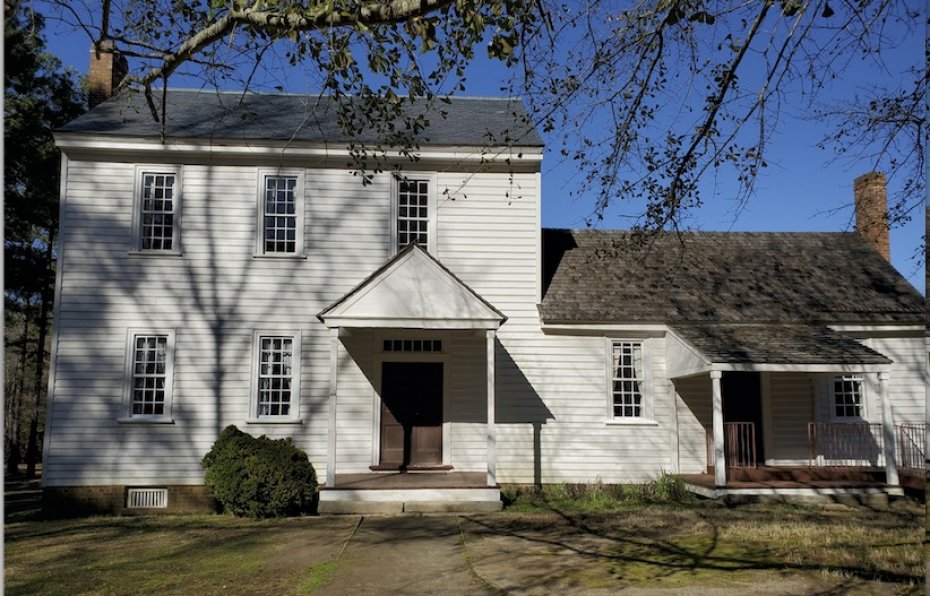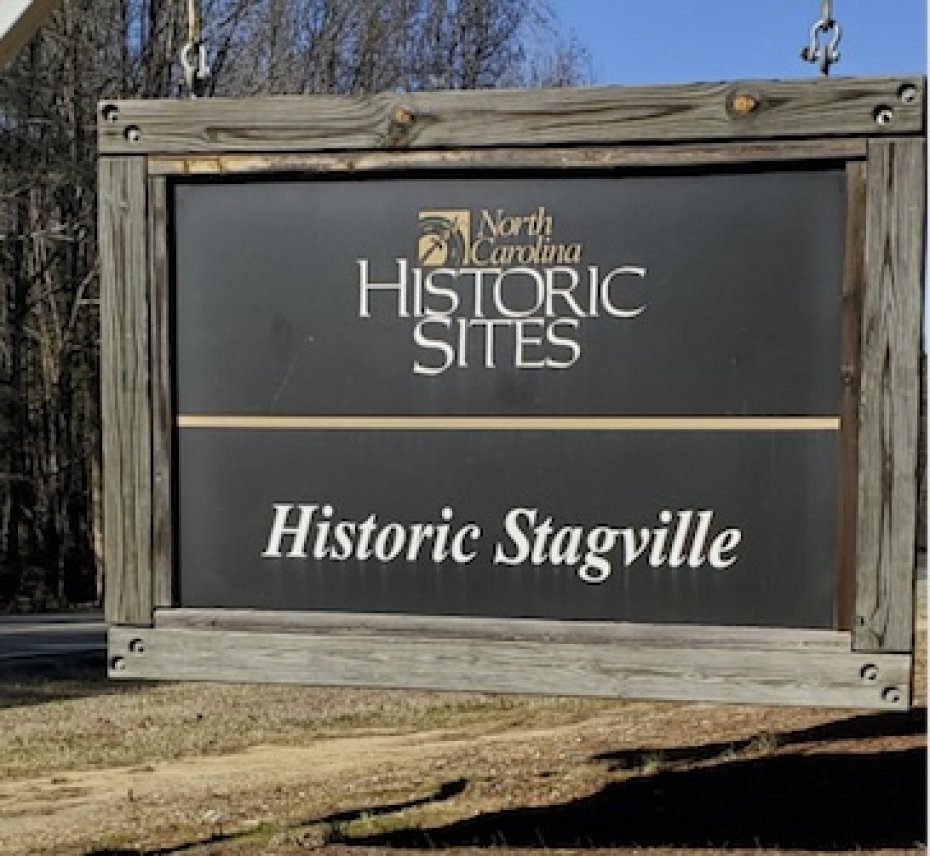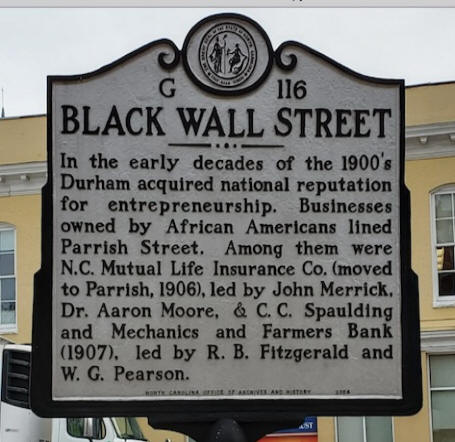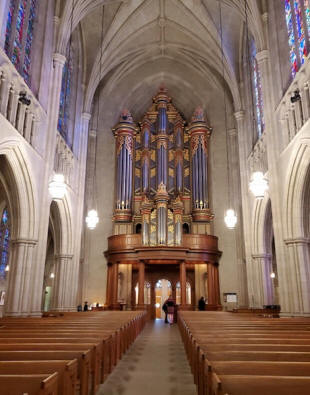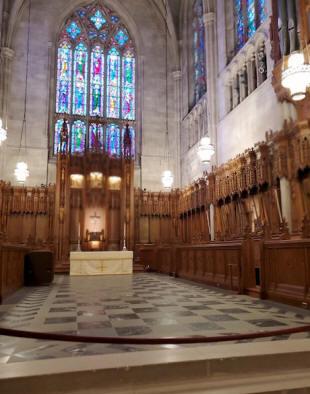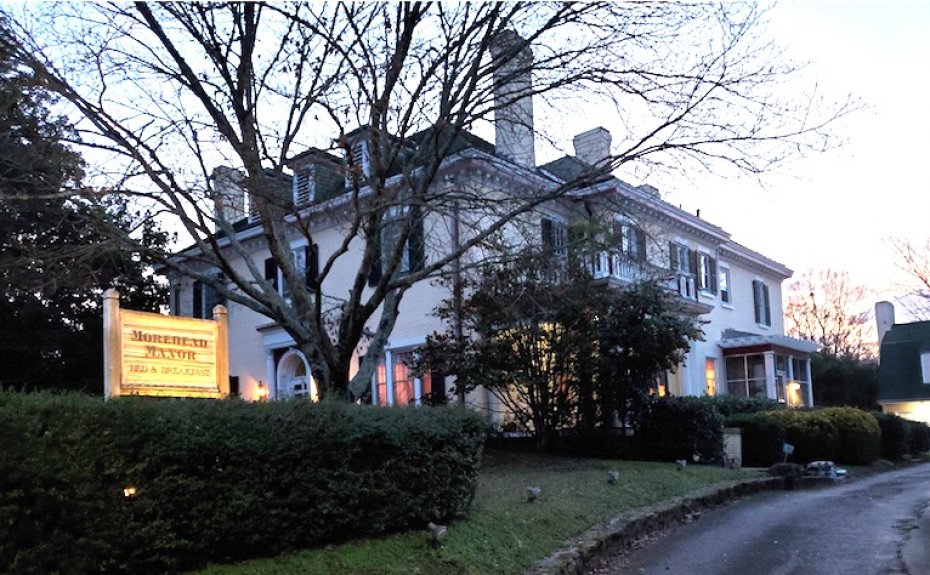
|
|
|
|
Stagville
Black Business
After the war the freedmen had few options and many
stayed on the plantations as sharecroppers. Gradually
Jim Crow laws were instituted to govern the rights,
behavior and social interactions of African Americans.
African Americans began migrating to the southwest section of Durham for factory employment shortly after the Civil War. They established the community of Hayti and by 1905 it was thriving and a model for other black settlements. Parrish Street, lined with black businesses, was the heart of Black Wall Street. In the 1960s the area declined due to urban renewal.
John Merrick founded North Carolina Mutual Life
Insurance Company in 1898. In 1910 the bank built to the
6-story Trust Building, the second tallest in NC. During
the Great Depression the bank was led by Asa T.
Spaulding, the first black actuary in the nation. The
bank is the oldest and largest black bank and is listed
on the National Register of Historic Places.
ncmutuallife.com
Carolina Theater
Civil Rights
Duke Campus
Philadelphia’s Julian Francis Abele earned his place on the mural as the African American architect designer of a large portion of Duke’s campus including its centerpiece Duke Chapel. Architecturally it was inspired by English Gothic with 77 windows the largest of which is 17.5-ft. by 38-ft. The interior chapel is 291-ft. by 63-ft. and the tower is 210-ft. tall. Morehead Manor
Durham’s sole black-owned inn is owned and operated by
Monica and Daniel Edwards. The Colonial Revival home
offers 4 large guestrooms, each with private bath and a
complete menu of amenities. Complimentary beverages,
homemade desserts and a generous breakfast are offered.
Guests can find a cozy nook or walk to any of the
numerous sites and attractions. Morehead Manor is
available for special rentals and weekend packages.
.
Renee Gordon has written a weekly travel column for the Philadelphia Sun Newspaper for the past fifteen years and has published articles on local, national and international travel in numerous publications. Her columns focus on cultural, historic and heritage tourism and her areas of specialization are sites and attractions related to African American and African Diaspora history. Renee has been a guest radio commentator on various aspects of tourism and appeared in a documentary, "The Red Summer of 1919". As an educator for thirty years she was an English teacher, event and meeting planner, served as an educational consultant and intern-teacher mentor. She contributed to textbooks on women's history and classroom management and has facilitated workshops on both subjects. Renee considers herself a "missionary journalist" and as such she continues to promote heritage and sustainable tourism. 2013 Recipient of African Diaspora World Tourism Flame Keeper in Media Award for Travel Writing Affiliations
We'd love your comments!
|
Connect with us on:
American Roads and | |||||||||||||||
|
Public Disclosure--
Please Read The FTC has a law requiring web sites to let their readers know if any of the stories are "sponsored" or compensated. We also are to let readers know if any of our links are ads. Most are not. They are just a way to direct you to more information about the article where the link is placed. We also have several ads on our pages. They are clearly marked as ads. I think readers are smart enough to know an ad when they see one but to obey the letter of the law, I am putting this statement here to make sure everyone understands. American Roads and Global Highways may contain affiliate links or ads. Further, as their bios show, most of the feature writers are professional travel writers. As such we are frequently invited on press trips, also called fam trips. On these trips most of our lodging, dining, admissions fees and often plane fare are covered by the city or firm hosting the trip. It is an opportunity to visit places we might not otherwise be able to visit. However, no one tells us what to write about those places. All opinions are 100% those of the author of that feature column. |
||||||||||||||||
|
Privacy Policy/ Archives /
Contributors /
Subscribe to
American Roads Books by
Kathleen Walls /
Contact /
Sponsor or Advertise/ American Roads & Global Highways Home Page
|







